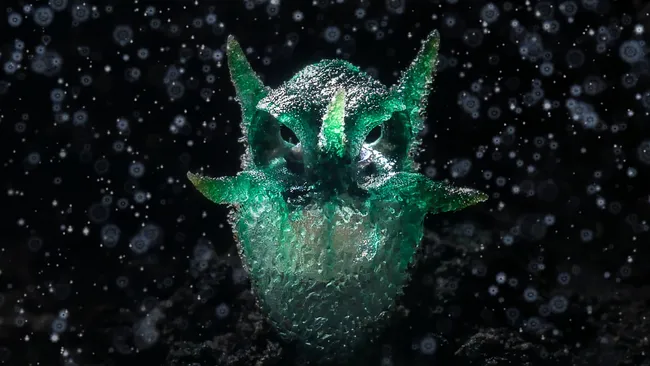A striking photo of the unique parasitic plant species, Thismia thaithongiana, has won the gold medal in the Plants and Fungus category of the World Nature Photography Awards. Resembling a scowling owl, this bizarre parasitic plant stands out with its eerie emerald glow, captured in the winning image.
Photographer Chatree Lertsintanakorn captured this mesmerizing sight in a secluded wildlife sanctuary in Thailand, where the minuscule plants emerge from the dark soil at the base of trees.
Thismia thaithongiana is a myco-heterotrophic species, meaning it does not photosynthesize but obtains its energy and nutrients from fungi, particularly the fungus associated with tree roots. Discovered in the Doi Hua Mot Mountains in Thailand in 2018, little is known about this plant, but its distinctive shape has earned it the name “Phisawong Ta Nok Hook,” translating to “mysterious owl’s eye.”
Most of its life is spent underground until it suddenly bursts through the surface, revealing its peculiar fruiting body.
Lertsintanakorn became acquainted with this rare species while meeting with photographer Suchat Chanhomhuan, one of its discoverers. With Chanhomhuan’s assistance, Lertsintanakorn located the plant in Thailand’s Huai Kha Khaeng Wildlife Sanctuary. “I noticed it grew primarily near the base of trees, making it easy to overlook,” Lertsintanakorn shared with Live Science via email.
The plant’s chosen habitat is ideal for its parasitic lifestyle. Certain species of fungi reside around and within the roots of large trees, forming an underground network in search of minerals that they exchange with the trees for nutritious sugars, in a symbiotic relationship. However, T. thaithongiana disrupts this harmony by stealing nutrients from the fungi.
Visible only when its fruiting body emerges from the ground, Thismia thaithongiana is incredibly tiny, measuring only 2 to 8 millimeters (0.08 to 0.3 inches) in length. Lertsintanakorn’s captivating image earned the Gold award in the Plants and Fungi category of the World Nature Photography Awards. Founded in 2020, the competition received over 3,000 image entries this year.
“Our winners never fail to take our breath away with their stunning images. As always, it’s such a joy to see the amazing caliber of entries into the awards,” remarked Adrian Dinsdale, cofounder of the World Nature Photography Awards in a statement.
Other remarkable images from the competition include a haunting collection of olive baboon (Papio anubis) heads and skulls at the Abomey voodoo market in Benin, an orca (Orcinus orca) splitting a herring ball underwater, and a group of crabs clinging to the lava rock-encrusted shoreline under a wave of water.
